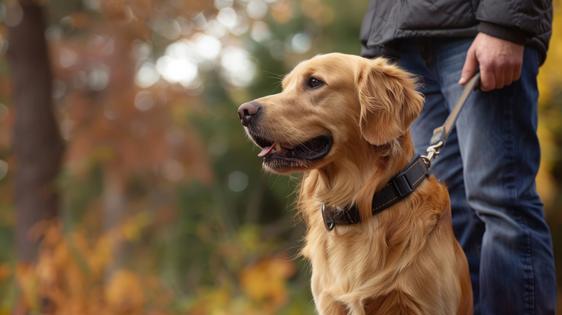My Pet World: Building confidence in your rescue dog to overcome walking challenges
Dear Cathy,
We recently rescued a four-year-old lab/pit-bull mix named Vesna, who has bonded strongly with me. The issue is, she refuses to walk with my wife when I’m not there, sitting down in the driveway or sidewalk despite positive reinforcement. How can we train her to walk with my wife?
The second issue is her reluctance to walk on gravel. We live in the desert, and so it’s hard to avoid. We’ve been moisturizing her paws regularly and putting her in boots to help her walk down the driveway. She’s slowly improving, but sometimes regresses and I have to pick her up or run with positive energy saying, “come on punky,” which sometimes works. Any advice on these two things?
— Beth, Arizona
Dear Beth,
First, I commend you for rescuing Vesna and giving her a loving home. It’s hard to know what Vesna may have experienced that makes her reluctant to walk on gravel or become less attached to her other caregiver. But it’s clear; she has found a patient and loving family who listens and responds to her needs.
Let’s start with the first issue — Vesna’s reluctance to walk with your wife when you aren’t around. It’s common for dogs to form strong attachments to one person and feel anxious or uncertain when that person isn’t present.
This could explain why she hesitates when your wife tries to take her for a walk. To help with this, focus on building Vesna’s confidence and strengthening her bond with your wife.
One way to do this is by making walks fun and rewarding for Vesna. Start by having your wife practice walking her while you’re still home. Keep the walks short and comfortable and be sure she offers lots of praise and treats when Vesna walks alongside your wife. You can even join the walks initially, then slowly let your wife take the lead while you stay back or out of sight for short intervals. Encouraging your wife to feed Vesna or give her treats before and after walks can also help, as Vesna will start associating your wife with positive experiences. Keep walks low-key so Vesna doesn’t pick up on any anxiety or frustration.
As for Vesna’s hesitation with walking on gravel, it sounds like she’s making progress, which is great. Some dogs have sensitive paws and may find gravel uncomfortable, but they can become desensitized to it over time. Continue exposing Vesna to gravel in short, positive training sessions, using treats to encourage her to step onto the gravel for a few seconds, then lead her off it. Repeat this training daily, gradually increasing the distance she walks on it by placing treats farther along. Keep moisturizing her paws to protect against irritation and remember to give her plenty of praise and treats whenever she successfully walks on the gravel, even if it’s just one paw stepping on it. With your patience and positive reinforcement, she’ll become more comfortable walking on these textures over time.
Training takes time, but you’re doing a great job supporting her so far. With a few tweaks to her routine, I’m confident she’ll continue to make progress. She’s lucky to have you both of you looking out for her.
Dear Cathy,
I have a two-year-old black lab, who is about 30 pounds. When we are not home, he stays in his crate. At night we also put him in the crate. Lately, he has started to bark at night when he is crated. We purchased him a bed for sleeping at night. How can we train our dog to sleep on his bed during the night?
— Joseph, Plainview, New York
Dear Joseph,
Dogs can become very restless if they spend too much time in a crate, especially active breeds like labs. While crates are useful for managing behavior, they shouldn’t be a substitute for regular activity. I’m glad you’re adjusting his nighttime routine.
To train him to sleep on his bed, say the word "bed" and place a treat near his nose, guiding him toward the bed. When he steps onto it, use a reward word like "bingo" to mark the behavior and give him the treat. Repeat this several times a day until he understands. Once he does, move the bed around so he learns to follow the command no matter where it is.
At his age, he’s likely house-trained and past the chewing phase, so there should be no need for him to be confined to a crate for several hours each day. Giving him more freedom during the day will help reduce his restlessness and provide a healthier balance of activity and relaxation.
_____
_____
========
(Cathy M. Rosenthal is a longtime animal advocate, author, columnist and pet expert who has more than 25 years in the animal welfare field. Send your pet questions, stories and tips to cathy@petpundit.com. Please include your name, city, and state. You can follow her @cathymrosenthal.)
©2024 Tribune Content Agency, LLC.
(c) 2024 DISTRIBUTED BY TRIBUNE MEDIA SERVICES, INC.












Comments